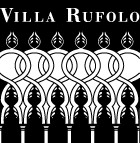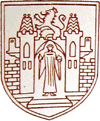

 Tradition has it that the Rufolo family, one of the leading dynasties in Southern Italy during the second half of the 13th century, descended from Rutilius Rufus, a statesman in the 2nd century BC who campaigned on behalf of military tribunes in the Pretorian army.
Tradition has it that the Rufolo family, one of the leading dynasties in Southern Italy during the second half of the 13th century, descended from Rutilius Rufus, a statesman in the 2nd century BC who campaigned on behalf of military tribunes in the Pretorian army.
The first information we have concerning the Rufolo family in Ravello dates from the 9th century. They owned land in the northern part of the town and were of a certain social standing: Giovanni Rufolo was Bishop of Ravello from 1150 until his death in 1209. Over this half century the family would surely have enhanced its status, and a few years later Nicola Rufolo married one of the most powerful women in the South of Italy, Sigilgaida Della Marra, sister of Angelo I, treasurer and fiscal supervisor to Federico II.
During the first half of the 13th century Nicola Rufolo undertook major building projects both in Ravello, rebuilding Palazzo Rufolo in the Islamic-Norman style, and at Giovinazzo (BA), where in the 1260s he erected a large fortified manor farm. This was a major centre for the production of oil using olives from the extensive groves in Molfetta, Bitonto and Giovinazzo. These were years of great political instability, as Manfredi, the last of the Swabian kings of Southern Italy, saw his authority increasingly curtailed. Nicola Rufolo took advantage of the situation to further the prestige of himself and above all of his sons in the economic administration of the Kingdom, benefiting from the pre-eminence of Giozzolino della Marra, a nephew of Sigilgaida and the current fiscal supervisor.
On the arrival of the Angevins following their victory in the Battle of Benevento in 1266, the members of the Rufolo family swore allegiance to the new rulers in order to safeguard their status in the administration of the Kingdom. They changed their coat of arms, replacing the red colour with blue and adopting the emblem of the Angevin dynasty, three lilies, in the chief. Nicola's son Matteo and grandson Lorenzo both held important offices in the Kingdom, alongside their Della Marra cousins. During this period, Nicola and Matteo acted as bankers to the royal family, financing its enterprises.
After the War of the Sicilian Vespers (1282) the Angevin regime found itself in considerable financial difficulties. This appears to have motivated the trial that was organized against the two Ravello dynasties of the Rufolo and Della Marra, with the aim of seizing their abundant possessions. The Angevin plan was successful. First, on 17 June 1283 members of the two families, with their children, were secretly captured and their lands confiscated. Five days later Prince Charles proclaimed the reasons for this action: they stood accused of corruption, treason, abominable perversions, making illicit exportation of wheat, and speaking in favour of the War of the Vespers.
Matteo Rufolo was accused of being in league with Queen Costanza, daughter of Manfredi and wife of Pietro III of Aragon. Three individuals were sentenced to death: Angelo and Galgano, sons of Giozzolino, and Lorenzo Rufolo, Matteo's eldest son. In addition the women and children were tortured, and all the property of the two families, including ships, horses and weapons, was expropriated. According to Sthamer the most likely cause of this persecution was the exorbitant level of taxation, which had reduced the population to pauperdom, together with the financial policy pursued by Giozzolino. However, one cannot rule out the impact of the enormous debt run up by the Angevin rulers, together with the crippling costs of the war. To secure his release from prison Matteo Rufolo had to pay over the enormous sum of 16,000 ounces of gold (the equivalent of fitting out eighty warships).
Flamand de Comises, abbot of St Victoire in Marseilles, was put in charge of confiscating all the forfeit property in Campania, particularly in Ravello. Of the figures who were condemned to death the most prominent appears to have been Lorenzo Rufolo, who in October 1282 is known to have been Master of the Ports in Puglia, and subsequently Chief Tax Collector for Sicily. He was beheaded in 1283. He was probably the inspiration for Boccaccio's novella featuring Landolfo Rufolo, an entrepreneur who, in the hope of doubling his wealth, lost everything he had invested and embarked on an eventful second career as a pirate. This story had a happy ending because the novella was designed to illustrate the workings of fortune, whereas Lorenzo himself only knew singular misfortune.
The Rufolo family never recovered from this royal retribution, and nor did Ravello. The downfall of the family had been pursued primarily by Prince Charles of Salerno (the future Charles II of Anjou), by the Pope, who supported the Angevins, and by some other families in Ravello, including the Frezza family, who resented their powerful neighbours. Some members of the Rufolo family decided to move to Naples, but by the 15th century the family had lost all its power. Peregrino Rufolo, the fourteenth bishop of Ravello, recognised that he was the last representative of the dynasty.
From research carried out by Alessio Amato